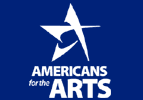Little did I know when I was writting about the lack and/or poor quality of data-based information in the arts (here, here, and here) that The New York Times was about to provide
 reinforcement. It came in the form of a Page One article in yesterday’s paper, which for most of the day and even now is the most-emailed story: “For Today’s Graduates, Just One Word: Statistics.” It doesn’t mention the arts or culture, but it does say this:
reinforcement. It came in the form of a Page One article in yesterday’s paper, which for most of the day and even now is the most-emailed story: “For Today’s Graduates, Just One Word: Statistics.” It doesn’t mention the arts or culture, but it does say this:
“We’re rapidly entering a world where everything can be monitored and measured,” said Erik Brynjolfsson, an economist and director of the Massachusetts Institute of Technology’s Center for Digital Business. “But the big problem is going to be the ability of humans to use, analyze and make sense of the data.”
The new breed of statisticians tackle that problem. They use powerful computers and sophisticated mathematical models to hunt for meaningful patterns and insights in vast troves of data.
Clearly, other sectors of the economy and the culture at large are moving far ahead on collecting and data-mining numbers. Yet my posts have been met with two reactions:
- Maybe, but — arts groups don’t have the time or the money to do this, so forget about it.
- You’re right to call attention to this, but it’s never going to change, and no one takes the
numbers seriously anyway.
True, some do laugh at the numbers — but the cultural world is laughed at when people read or hear these crazy numbers. If arts groups don’t start getting more numbers savvy, they’re going to be left further and further behind in a very sophisticated culture.





